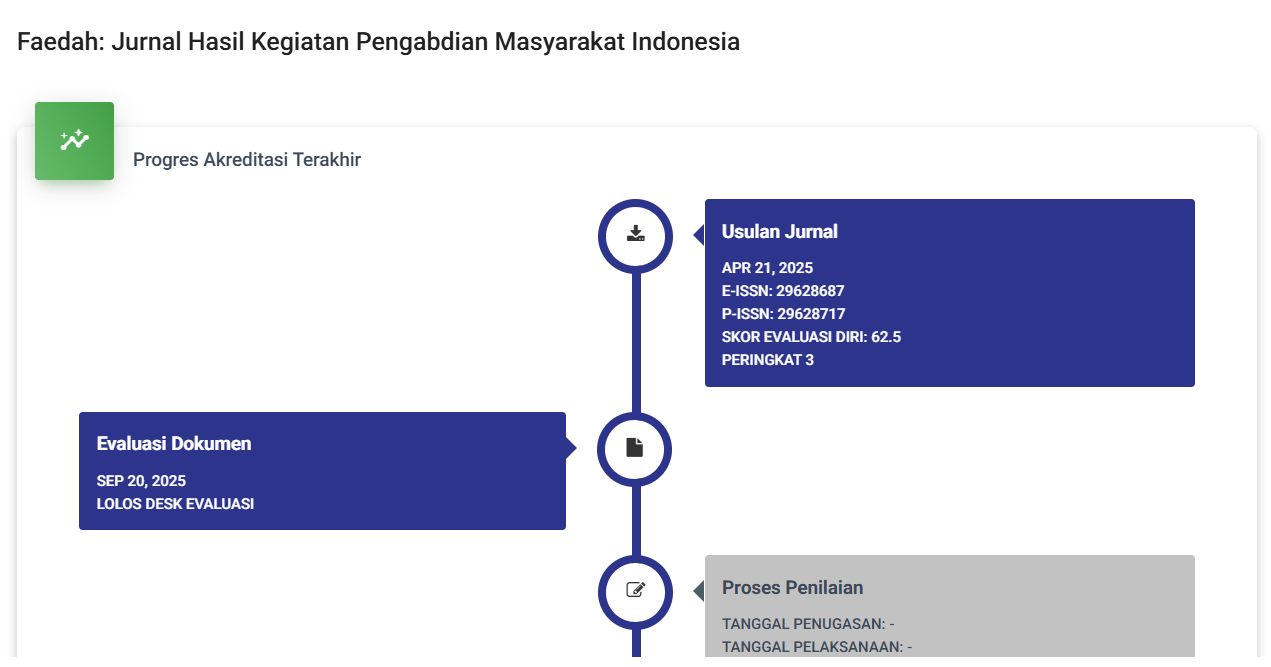Pemberdayaan Masyarakat Melalui Inovasi Sosial: Kreasi Tas Hajatan dan Daster dari Sarung Bekas
DOI:
https://doi.org/10.59024/faedah.v3i1.1231Keywords:
Community Empowerment, ewing Hajatan Bags, Daster from Used Sarong Fabric, Social Innovation, Social EntrepreneurshipAbstract
Entrepreneurship training entitled "Social Innovation in Community Empowerment: Creating New Entrepreneurs Sewing Hajatan Bags and Dasters from Used Sarong Fabric in Kayen Village, Bandarkedungmulyo District" aims to improve technical skills, understanding of social entrepreneurship, and digital marketing strategies for non-productive housewives. This program was implemented on October 27-30, 2024 at the Kayen Village Hall and was attended by 20 participants. The implementation of the activity included a pre-test stage to measure initial abilities, technical training in sewing hajatan bags and dasters, and a post-test to evaluate the results of the training. The post-test results showed an average increase of 65% in sewing skills, understanding of the concept of social entrepreneurship, and product marketing skills. During the training, several obstacles were identified, including limited tools and supporting materials, disparities in the initial skill levels of participants, and the lack of confidence of some participants in utilizing digital platforms for marketing. These obstacles were successfully overcome through intensive mentoring by a team of trainers who provided practical direction and motivation during the activity. As a concrete result, four business groups were formed, namely the Bodeh Group, the Amanah Kreatif Group, the Maju Jaya Sewing House, and the Mak Kreatif Group, which utilize digital platforms such as WhatsApp, Instagram, TikTok, and Shopee to support the marketing of their products. This program not only increases the capacity of individual participants but also creates a sustainable community-based entrepreneurial ecosystem. The results of the training show that the social innovation approach can be an effective solution to significantly empower the economy of rural communities. With proper implementation, this model has the potential to be replicated in other areas to overcome similar problems.
References
Gopalan, N., Kumar, R., & Verma, P. (2021). Social Innovation and Community Empowerment. Journal of Rural Development, 38(2), 15-28. https://doi.org/10.1000/jrd2021.15
Gupta, A., Patel, S., & Sharma, D. (2022). Community-Based Collaborative Approaches for Rural Development. International Journal of Social Entrepreneurship, 5(1), 33-48. https://doi.org/10.1000/ijse2022.33
Martin, R. L., & Osberg, S. (2021). Social Entrepreneurship: The Case for Definition. Stanford Social Innovation Review, 19(3), 28-39. https://doi.org/10.1000/ssir2021.28
Ramaswamy, V., Pillai, K., & Nair, M. (2023). Innovation and Market Access in Rural Entrepreneurship. Journal of Sustainable Development Studies, 42(4), 112-128. https://doi.org/10.1000/jsds2023.112
Widianingsih, R., Hadi, S., & Pratama, T. (2022). Empowering Rural Women through Community Development Programs. International Journal of Gender and Development, 14(2), 57-71. https://doi.org/10.1000/ijgd2022.57
Downloads
Published
How to Cite
Issue
Section
License
Copyright (c) 2024 Faedah : Jurnal Hasil Kegiatan Pengabdian Masyarakat Indonesia

This work is licensed under a Creative Commons Attribution-ShareAlike 4.0 International License.









